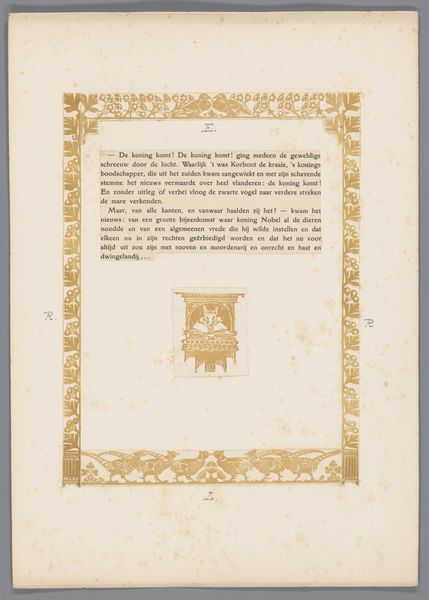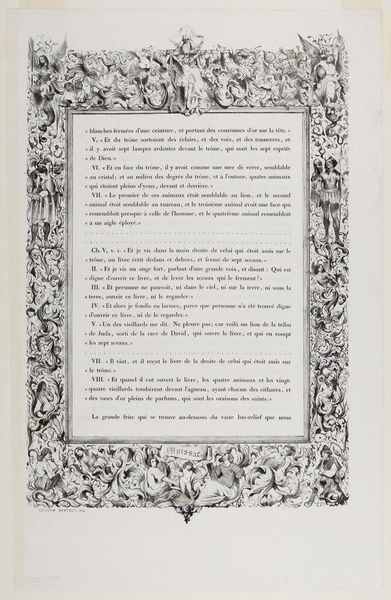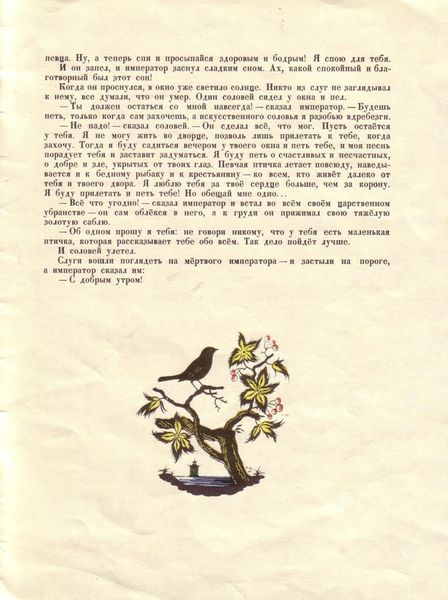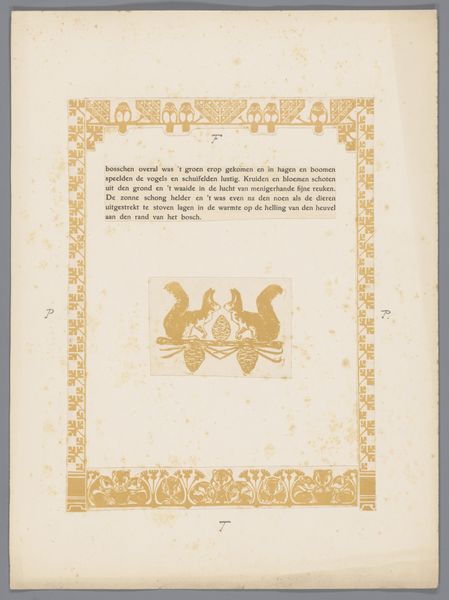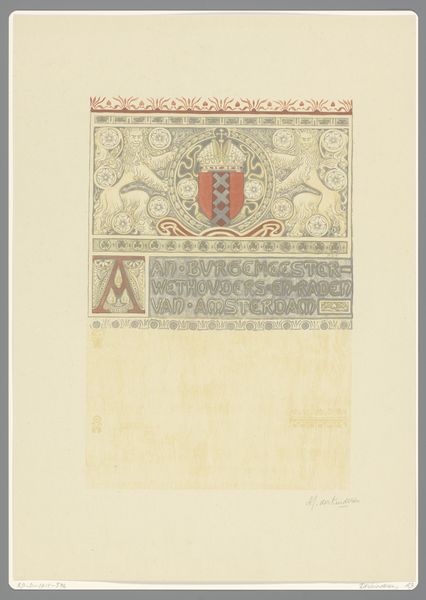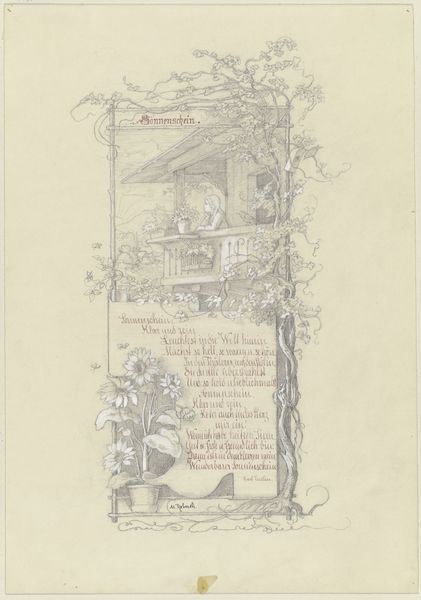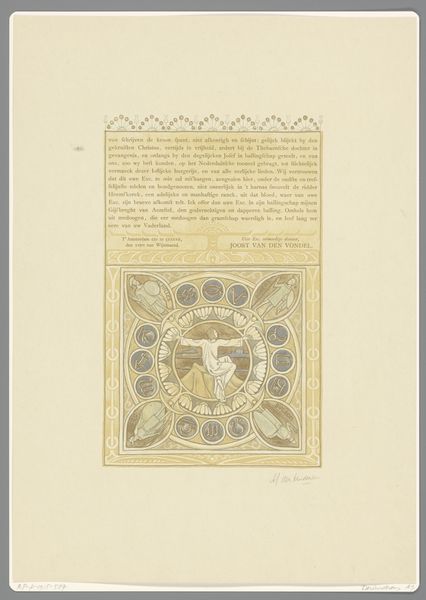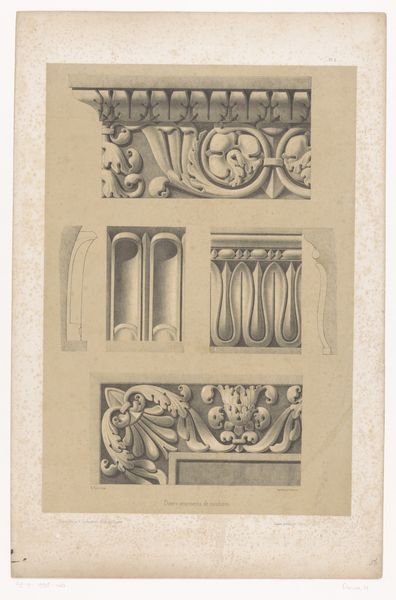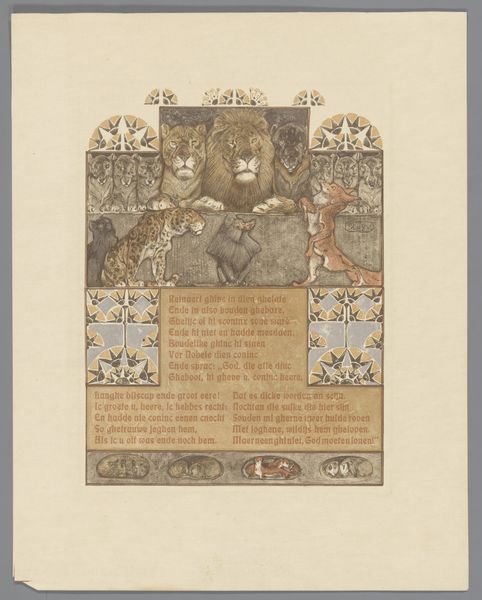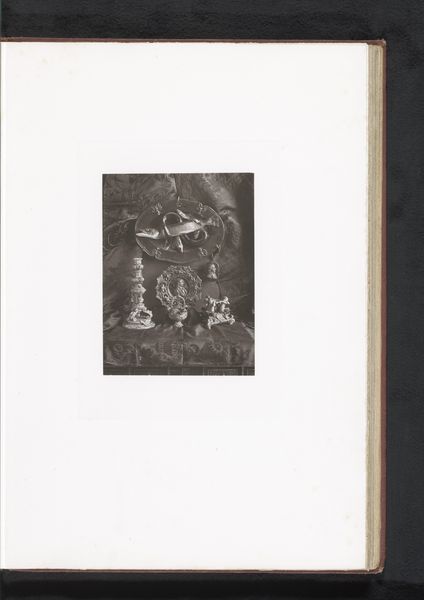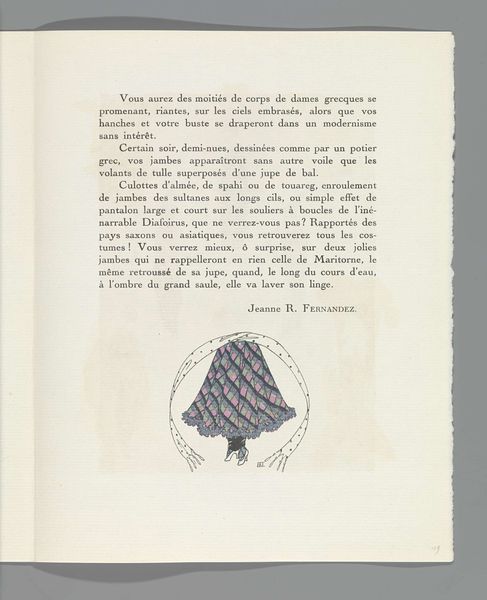
drawing, paper, watercolor, ink
#
drawing
#
fairy-painting
#
paper
#
text
#
watercolor
#
ink
#
mythology
#
symbolism
#
russian-avant-garde
#
watercolour illustration
#
watercolor
Copyright: Public domain
Curator: We’re looking at an illustration for the fairy tale “Vasilisa the Beautiful” by Ivan Bilibin. It's rendered with watercolor and ink on paper. The fairy tale imagery pulls you in immediately. What's your first impression? Editor: It has this incredibly crisp, clean quality. The colors are muted, yet there's a depth, almost an archaic sensibility. Like looking at a page from a medieval manuscript. What stands out most to me is the decorative floral framing element; it creates an incredible sense of the story it depicts. Curator: Absolutely, it speaks to a pre-modern understanding where ornament wasn't just decoration, it was intrinsic to the story being told. Consider Bilibin's commitment to *byiliny*—traditional Russian folk epics—and his desire to communicate this world visually. Editor: So Bilibin positions himself as an almost ethnographer or historian through his artistic depictions of Russian stories? Curator: Exactly. He synthesized a sense of “Russianness,” borrowing motifs from medieval illuminated manuscripts, folk art, and even Byzantine icons. The composition uses traditional borders, presenting the fairy tale text with an image in a structured frame. I believe this is critical for maintaining and transmitting Russian culture, providing tangible connections to the past and reinforcing national identity. Editor: It’s like visual encoding of values. But thinking about it now, beyond just nationalism, aren't fairy tales really just psychological mirrors reflecting universal human experiences of struggle, transformation, good and evil? Are we just seeing how it maps onto national narratives in Russia? Curator: You’ve hit on something key: Bilibin gives a visual language to psychological concepts expressed through these classic fairy tales, making cultural values more accessible. Consider the prevalence of nature in his illustrations. His choices in rendering give them power and meaning. Editor: Looking at it with those ideas in mind gives the imagery a profound meaning! It feels so meticulously planned, not a single detail seems out of place or random. Curator: Indeed, and understanding his artistic intent illuminates why these images still resonate. Editor: Thank you. Examining it this way, rather than passively viewing, transforms how we engage with and experience art.
Comments
No comments
Be the first to comment and join the conversation on the ultimate creative platform.
